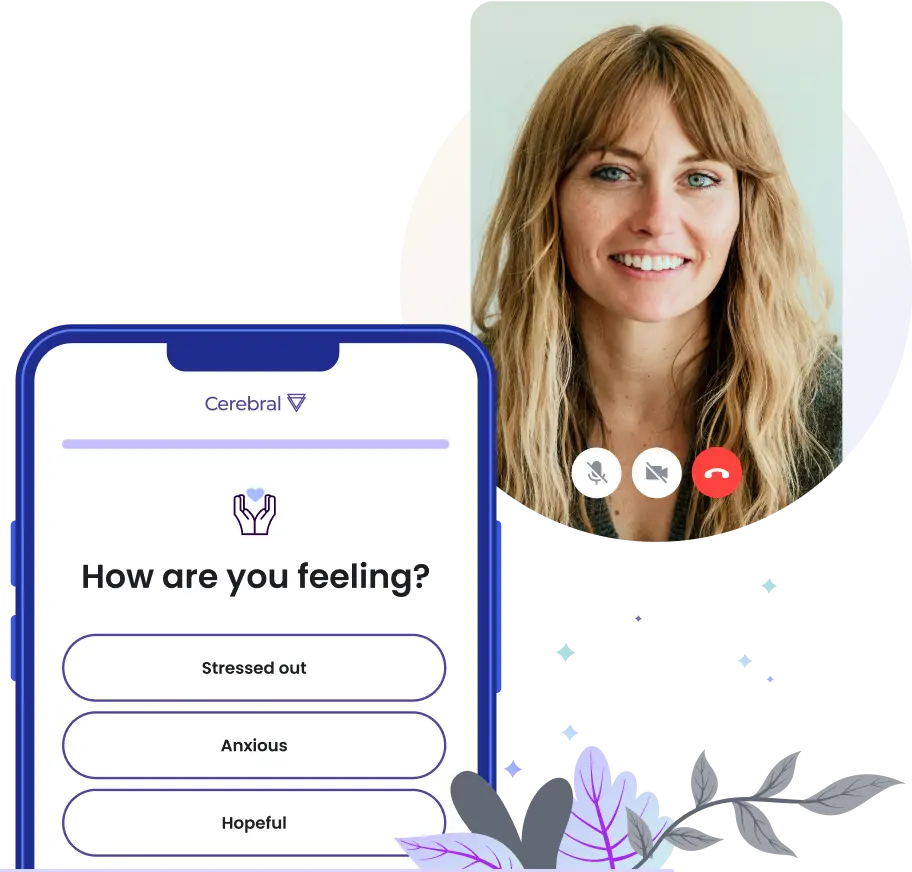Millions of Americans who suffer from mental illnesses go untreated. This number has only risen since the onset of the COVID-19 pandemic, with fresh headlines detailing how serious the crisis has become. Just this month, for example, new data released in the American Journal of Preventive Medicine showed that almost 1 in 10 Americans suffer from depression.
However, many victims of depression, anxiety, and other mental health conditions are simply unable to access the care they need for their conditions.
At Cerebral, the majority of the patients who come to our platform haven’t been able to access high quality care through other avenues. In an effort to bring more attention to this issue, we have published our inaugural State of Mental Health Care report today. Its aim is to take a holistic look at the mental health field and provide Cerebral’s perspective on the potential solutions to our field’s main challenges. The full report can be found here.
Barriers to access: why are so few people getting treatment?
To compile our report, we evaluated numerous peer reviewed studies and sources of publicly available information. The results paint a stark picture: in 2020, 1 in 5 US adults experienced a mental illness, and 1 in 20 faced a serious mental illness (SMI), but only 46.2% of individuals received treatment. Our analysis has pinpointed five key reasons for why that is: cost of care, lack of providers who take insurance or are in-network, long wait times for an appointment, clinician fit (e.g. cultural, stylistic factors, etc.), and clinician availability, each with varying impact, depending on the individual.
Cost of care was the most cited factor among these five. In the US, 10.3% of adults with a mental illness were uninsured in 2020, and for those without insurance, a standard hour-long therapy session can cost up to/more than $250. What’s more, only 56% of psychiatrists accept commercial insurance, compared to 90% of non-mental health physicians. Taken together, these unfortunate circumstances force many Americans seeking mental health care to pay out of pocket. What’s more, the cost is often prohibitive, even for those earning a comfortable living. An estimated 39% of US adults cited cost as a reason for not receiving mental health treatment.
Even if an individual can overcome the sheer cost of care, they face additional barriers such as finding an available clinician who is (1) in their area, (2) accepting new patients, and (3) a cultural and stylistic fit. The average wait time for an appointment for new psychiatric patients can range from 25 to 90 days. As of March 2021, an estimated 122 million Americans were living in areas with a shortage of mental health care professionals. About two thirds of these shortages were in rural or partially rural parts of the country. Finally, as of 2020, the American Psychological Association reported that of all American psychologists, only 6.18% identified as LatinX, and only 4.24% identified as Black.To make matters worse, many people also battle with the stigma of admitting to mental health issues and seeking treatment for them at all.
Our beleaguered mental health system is not setting our patients up for success.
Cerebral’s Mission: Meeting Patients Where They Are
The reality for our patients prior to finding Cerebral is that it has been very hard for them to get help.
Of the patients who turn to Cerebral for depression treatment, 76% report symptoms consistent with moderately severe or severe depression. Similarly, of the patients who came to Cerebral for anxiety treatment, 89% report symptoms consistent with moderately severe or severe anxiety.
Cerebral’s telehealth model has proven its ability to fill this void. Our fully virtual model allows our clinicians to meet people where they are, vastly expanding the field of mental health care professionals. Patients have an easier time both getting that first appointment and making that personal connection through a tailored matching algorithm where we take into account our patients’ preferences. All the while, they can avoid perceived stigmas by taking appointments from their phone or computer or wherever they’re most comfortable.
Above all, we are committed to ensuring that our clinical care is high-quality and equal to or above widely accepted standards of care. We do this by incorporating outcomes measurement into everything we do, something that is sorely lacking in the mental health care field. As an example, we use data science to improve care via a System for Measurement-based Access to Relationship-focused Treatment (SMART) approach. Our platform matches patients in a timely manner with an appropriate care team and care plan based on patient preference and clinical need. In turn, Cerebral is enabled to deliver high-quality care by using actionable data to improve access and therapeutic relationships.
Cerebral tracks meaningful and actionable clinical quality indicators in order to monitor effectiveness, efficiency, safety, and timeliness of care. This approach stands in stark contrast to traditional mental health care providers, who have been hesitant to undertake measurement in a rigorous manner. A recent study even reported that 25% of psychiatrists do not use electronic medical records, and opt for paper notes instead. For underserved communities and others, Cerebral’s data-driven approach will also help us set broader benchmarks for care that can improve results in the future.
What’s next?
Cerebral is making strides every day in closing both the access and quality gap outlined in our State of Mental Health Care report. This is just the beginning, and much remains to be done.. At Cerebral, we are committed to facing this challenge head on, and we will continue to commit to democratizing access to high quality mental health care for all.

Using Data to Best Match Patients and Clinicians

Why Can’t We Talk About Suicide?

How Cerebral Is Improving Response Times to Help Patients in Crisis

Call 911 if you’re having a
mental health emergency
Text Home to 741-741 if you're in emotional
distress and need immediate support
Call or text 988 Suicide &
Crisis Lifeline. Chat service
is available at 988lifeline.org.